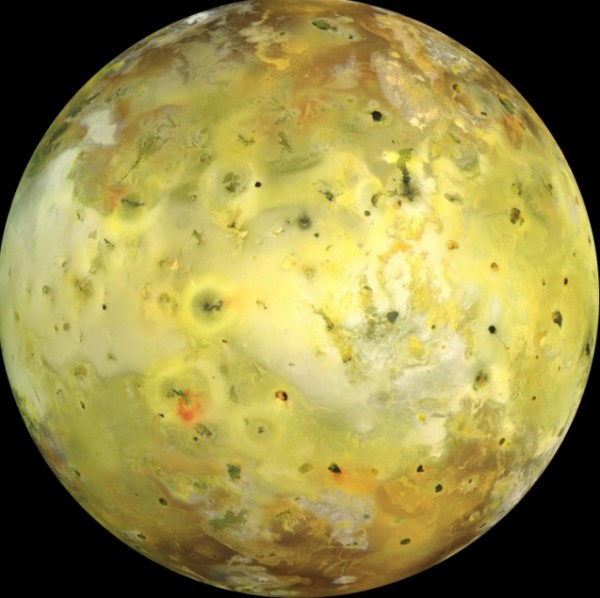Jupiter Moon Io Squeezes Out Mountains to Release Magma
| Ana Verayo | | May 18, 2016 05:31 AM EDT |
(Photo : NASA/JPL/University of Arizona) True color image of Jupiter’s moon Io made by the Galileo spacecraft. Io has no identified impact craters because massive volcanic eruptions continually resurface it.
Jupiter's pockmarked moon Io is known for its intense volcanic activity on its surface and possesses one of the highest mountain peaks in the solar system, however it has been an enigma for planetary scientists if the two geological features are linked together.
In this new study, researchers from Washington University have confirmed with these new findings that this volcanic activity on Io is behind the formation of the massive mountain ranges on the moon, which is not like anything found on Earth.
Like Us on Facebook
According to lead author of the study, Michael T. Bland from Washington University, St. Louis, and from the United States Geological Survey, in the past, there were already theories about how the two were connected to each other, as mountains are formed by press faulting, which means that large parts of Io's crust is lifting.
With the help of more advanced computer models, the team established better models to demonstrate the driving forces of these alien mountains which also focused on the behavior of Io's crust, as it breaks up due to volcanic activity and stress. The simulations resulted in the deep faults that are generated by volcanoes.
This means that the magma is trying to make its way to the surface of the moon, pushing the upper crust further downwards, producing stresses deep into the crust. With this amount of stress and force, some parts of the crust bulges upwards, creating these anomalies as gigantic mountains.
On Io, this formation process is considered completely different than how mountains are formed on Earth and also on other planets in the solar system, that are commonly created when tectonic plates are shifting together.
Bland explains that these mountains are not only a product of tectonic plate movement but also act as a top layer of this convection system that cools down Earth's temperatures during volcanic eruptions. For Io, on the other hand, the moon uses another cooling system involving magma flowing on its surface that is cooling down and then slides back inside the warm interior without any tectonic plate movement.
However, stress created by this process can hinder the magma path towards the surface of Io. With the help of Io's gigantic mountain ranges, they reduce the stresses therefore allowing magma to flow and allow movement within the crust, says Bland.
These new findings show how these mountains are not just the product of intense volcanic activity on Io but they are also an integral part in maintaining the cooling process of the moon. When these mountains form, they relieve stress in that region, ultimately allowing magma to flow better.
This new study is published in the journal Nature Geoscience.
TagsJupiter, jupiter moon io, mountains volcanoes io, solar system, io moon geology
©2015 Chinatopix All rights reserved. Do not reproduce without permission
EDITOR'S PICKS
-

Did the Trump administration just announce plans for a trade war with ‘hostile’ China and Russia?
-

US Senate passes Taiwan travel bill slammed by China
-

As Yan Sihong’s family grieves, here are other Chinese students who went missing abroad. Some have never been found
-

Beijing blasts Western critics who ‘smear China’ with the term sharp power
-

China Envoy Seeks to Defuse Tensions With U.S. as a Trade War Brews
-

Singapore's Deputy PM Provides Bitcoin Vote of Confidence Amid China's Blanket Bans
-

China warns investors over risks in overseas virtual currency trading
-

Chinese government most trustworthy: survey
-

Kashima Antlers On Course For Back-To-Back Titles
MOST POPULAR
LATEST NEWS
Zhou Yongkang: China's Former Security Chief Sentenced to Life in Prison

China's former Chief of the Ministry of Public Security, Zhou Yongkang, has been given a life sentence after he was found guilty of abusing his office, bribery and deliberately ... Full Article
TRENDING STORY

China Pork Prices Expected to Stabilize As The Supplies Recover

Elephone P9000 Smartphone is now on Sale on Amazon India

There's a Big Chance Cliffhangers Won't Still Be Resolved When Grey's Anatomy Season 13 Returns

Supreme Court Ruled on Samsung vs Apple Dispute for Patent Infringement

Microsoft Surface Pro 5 Rumors and Release Date: What is the Latest?










